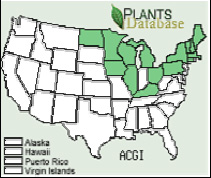

It is native to China and the Korean peninsula, and has been introduced to Japan, North America and Europe. Norway maples have small fruits that look like tiny green balls these fruits often stay on the tree throughout winter before falling off in springtime. Silver maples produce small fruits called “samaras” that are winged and spin as they fall from the tree. Sugar maples produce large fruits called “keys” that hang down in pairs from long stems red maples also have keys, but they’re smaller and don’t hang on stems. Silver maple bark is light gray and flaky, while Norway maple bark is dark brown or black with deep fissures.įinally, take a look at the tree’s fruit. Red maple bark is also red-brown, but tends to be smoother than sugar maple bark. Sugar maple bark is dark and smooth when young, but turns reddish-brown and develops deep furrows as it matures. The shape of the lobes can help you identify the species – for example, sugar maples have deeply cut lobes, while red maples have more shallowly lobed leaves.Īnother way to tell which kind of maple you have is by looking at the bark. Maple leaves are usually lobed, with anywhere from three to nine lobes. If you’re not sure what type of maple tree you have, don’t worry – there are a few ways to figure it out. How Do I Know What Kind of Maple Tree I Have?
Amur maple invasive full#
It is also tolerant of a wide range of growing conditions including full sun to partial shade, moist to dry soils, and clay or sandy soils.

It can be planted as a specimen plant or in mass for hedges or screens. The Amur maple is often used as an ornamental plant due to its attractive foliage and compact size. The fruits are winged seeds that mature in late summer and disperse by wind. The flowers are small and reddish-purple, blooming in clusters in early spring before the leaves emerge. They are dark green in color with a paler underside. The leaves are opposite, simple, and 3-5 inches long with serrated margins. It typically grows to 15-20 feet tall, but can reach up to 30 feet in height. The Amur maple (Acer ginnala) is a deciduous shrub or small tree that is native to northeastern Asia. You may need to use a chemical herbicide to kill any remaining roots.Cut the tree down at its base and remove all of the roots if possible.

Once you have confirmed that the tree is an Amur maple, you can begin removing it from your property.If you think you have found an Amur maple, cut a small branch from the tree and take it to your local Cooperative Extension office for identification.The tree may also have small, greenish flowers and red fruits.These include small, reddish-brown leaves with three to five lobes.Look for signs of Amur maple in your area.You can also try to find a tree with fruit clusters that have 3 winged seeds. To identify an Amur maple, look for its distinctive leaves and smooth bark. The Amur maple is native to China and Japan but has been introduced to North America as an ornamental tree. The bark is smooth and gray with horizontal lenticels. They have dark green, deeply lobed leaves that turn yellow or orange in the fall. Amur maples are small to medium-sized trees that can reach a height of 20-30 feet.


 0 kommentar(er)
0 kommentar(er)
